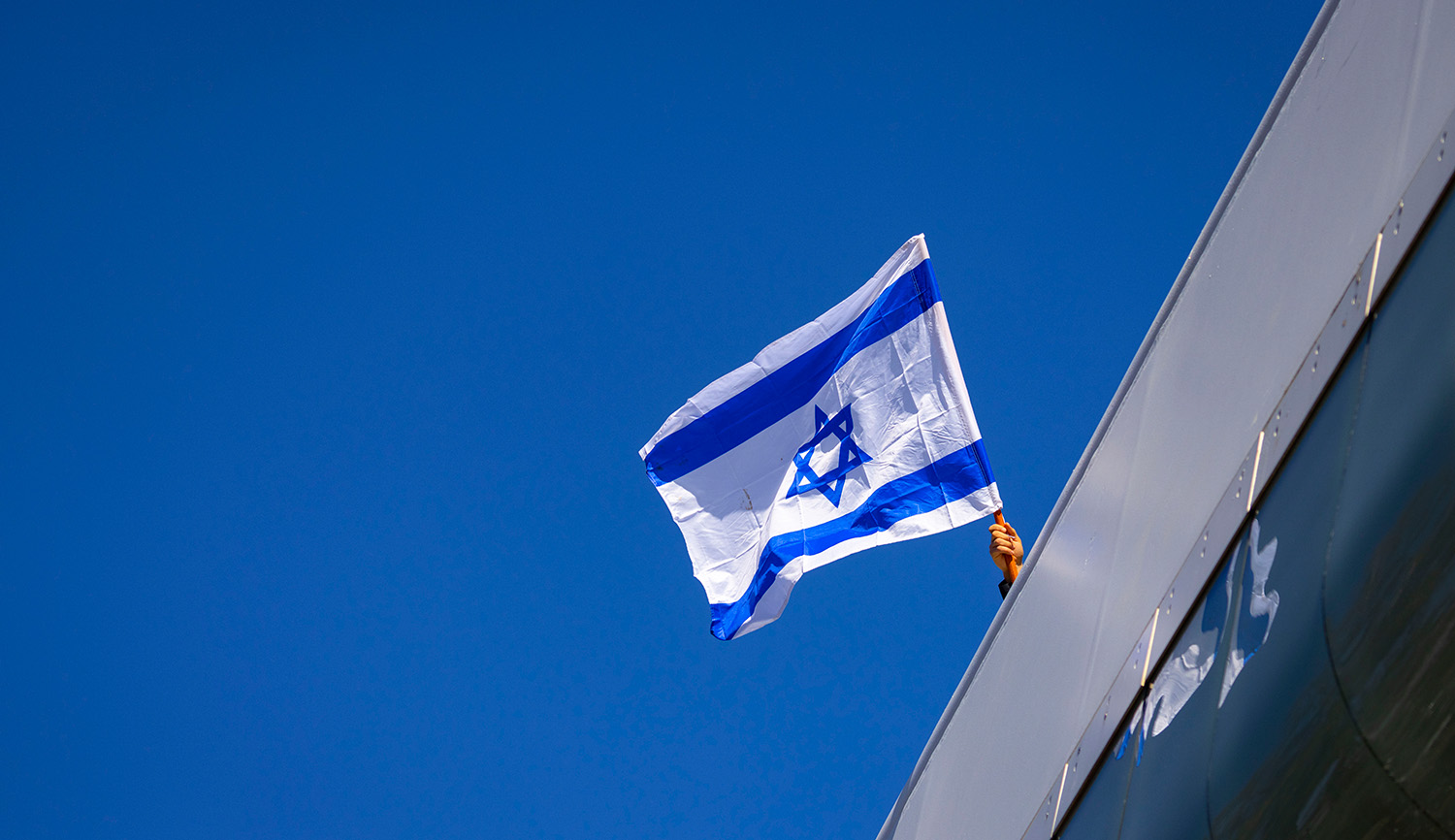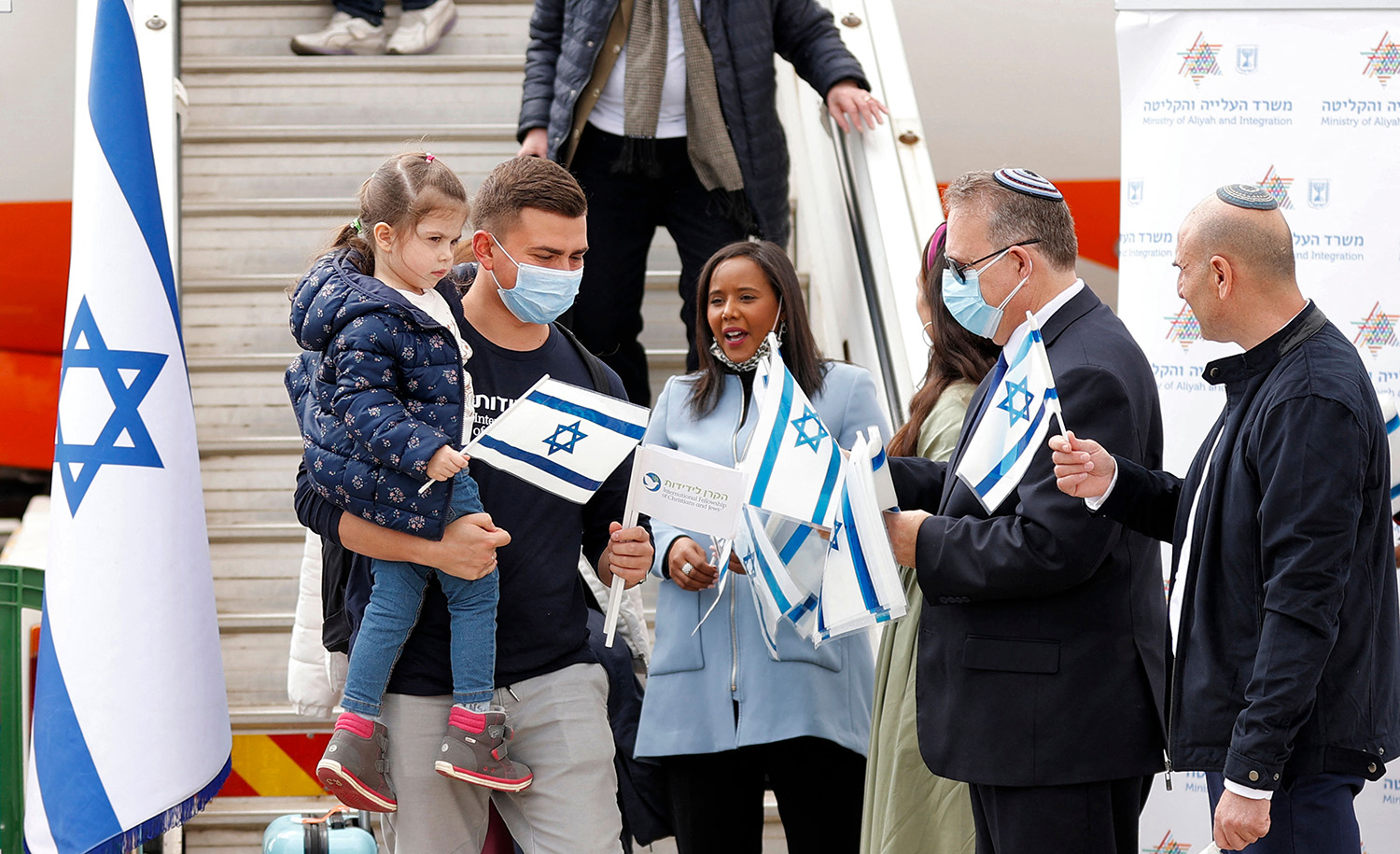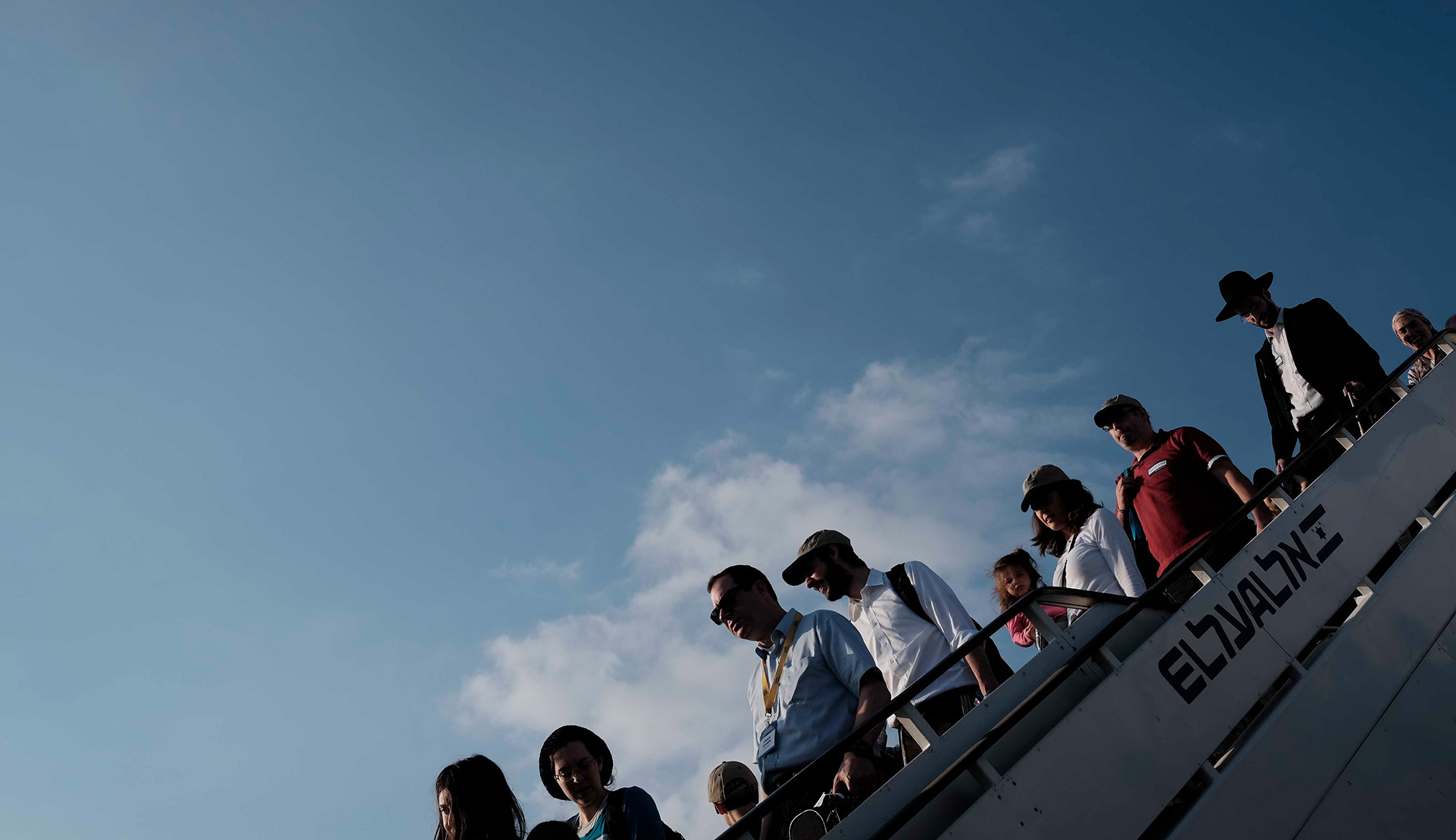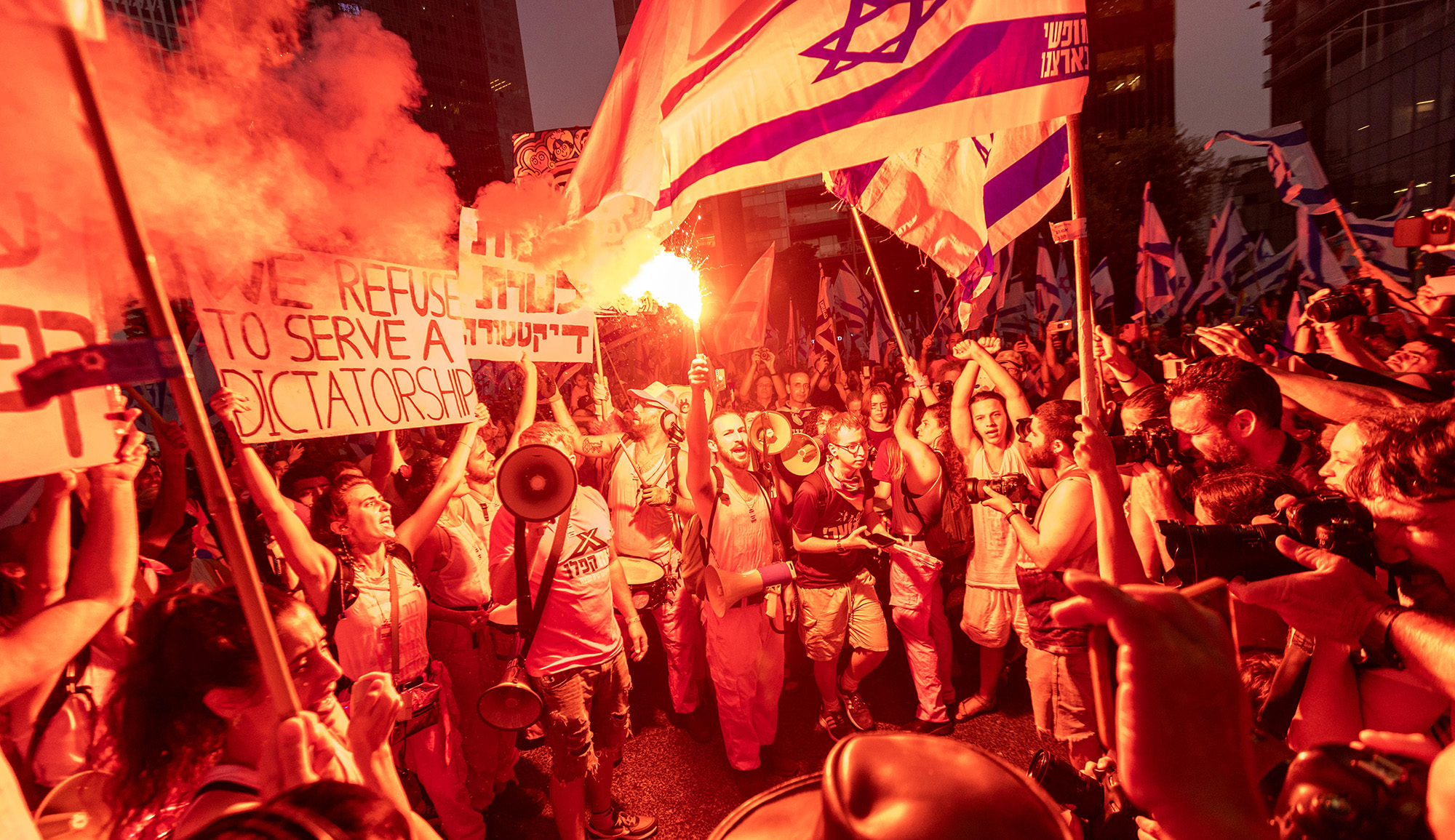“The Looming War over Israel’s Law of Return,” investigates both a major debate facing the Jewish state in the coming years and the sociopolitical factors driving it. Yet for all the importance of this subject, I found the categories underlying this analysis inadequate. I don’t want to attempt here a thoroughgoing rebuttal, but instead I want to focus on some of the article’s underlying assumptions, and suggest that the chasm dividing Israeli society isn’t quite so vast and unbridgeable as it claims, and therefore may not be destined to continue widening.
The essay relies on extensive empirical data in its analysis. But these data express categories that are far less stable or clearly defined than pollsters would like them to be. Let us start with the simple question: who are the “secular” Israeli Jews? If we mean people who don’t believe in God, don’t go to synagogue, and never or very rarely engage in religious practices, there are very few indeed. I would estimate that they make up about 5 to 10 percent of Israel’s Jewish population. How is it then that repeated surveys of Israeli society find that either a plurality or a majority of Israelis define themselves as “secular”? It is simply because the term means something specific in the Israeli context that doesn’t correspond with the meaning of “secular” as it is employed internationally by sociologists and students of religion.
The category is of course borrowed from Christian societies (though I suspect even there it is inexact), and perhaps may even apply to Jews living in Western countries. There it is understood that a secular person lives a life entirely without religion, save perhaps putting up a Christmas tree. But in Israel the vast majority of the population, including most “secular” Jews, observe numerous religious practices, which in turn shape their values and family lives. Upwards of 90 percent of Israeli Jews attend Passover seders, put mezuzahs on their doorposts, and circumcise their sons. This means that the vast majority of “secular” Israeli Jews carry out these practices too. The same is true for less universal practices. We find, for instance that about 30 percent of “secular” Jews in Israel keep kosher homes, about 50 percent regularly light Hanukkah candles, and the same proportion testify to lighting Sabbath candles occasionally or even regularly. (Compared to about two-thirds of Jewish Israelis overall.) Thus, ironically, many more “secular” Israelis engage more regularly in religious practices than their “religious” European or American counterparts.
Why then, do these Jews check the “secular” box on surveys? Because they understand “religious” not in the Western sense of “someone for whom religion is an important part of his life,” but as meaning instead someone fully committed to observing Jewish law, halakhah. When given a greater array of categories to choose from, many of these so-called secular Jews pick such intermediate categories as “traditional.” (See, for instance this 2016 poll.) Of course, all the aforementioned practices also have a national aspect. But that has always been the case with Judaism, which maintains no clear distinction between religion and nationhood.
Contrary to the claims one sometimes hears of a pristine heyday of “secular” Zionism in the early years of statehood, religion has always played this sort of role in Israeli life. The leaders of Labor Zionism for the most part saw Jewish history and the meaning of the Jewish state through the prism of religious tradition and of the Hebrew Bible in particular. David Ben-Gurion liked to point out that, in absolute numbers, more people who kept the Sabbath voted for his Mapai party than for all the “religious” parties put together. The fact that Israel, in the era when the Labor party was dominant and the ḥaredi parties all but irrelevant, established a national religious administration and made no provisions for civil marriage is not an accident of history, but a conscious choice by the mainstream Zionist leadership, before and after the creation of the state.
To illustrate this point, I like to point to Ariel Sharon’s reply when asked what memory of the Yom Kippur War—in which he led Israeli forces across the Suez Canal into Egypt and surrounded the Egyptian Third Army—was etched most deeply into his memory. Sharon described the early morning of October 14, 1973, when, after spending the whole night with his staff planning the crucial crossing of the Canal, he climbed onto his command tank to take a short break. Sitting on the tank, perched on a sand dune, as dawn was breaking, he looked down on the shallow desert depression where his troops had camped, and saw that the soldiers, scattered among the tanks and vehicles, had gathered together boxes of ammunition and covered them with shrubs or camouflage nets, creating hundreds of small huts. He then realized it was the fourth day of the festival of Sukkot, and was struck that his men, most of them “secular” Israelis, had chosen to spend precious time and energy, in what might be their last hours, building sukkot in the Sinai Desert before marching into Egypt.
Let us now turn to the Ḥaredim. The first thing to note is that they are hardly a homogenous group, but are divided along lines of very different practices and communities of origin, holding a wide spectrum of attitudes about politics, work, military service, and much else. Thus, on the one hand, a substantial segment of Israeli Jews could be described as ḥaredi based on the stringency of their observance and even their choice of clothing, but are in fact committed Zionists who serve in the IDF. On the other hand, there are many Israelis who are only moderately religious but vote for ḥaredi parties. Moreover, Israelis often move among levels of religious observance and identification throughout their lives, so that a person born to ḥaredi or secular parents doesn’t necessarily remain part of that sector. In my view, the term ḥaredi is only meaningful when used as a political category. That is, a person is ḥaredi who votes for ḥaredi parties.
Since it is claimed that the fear of growing ḥaredi power now drives support on the left for maintaining the Grandfather Clause (although in truth the left every few years designates a new culprit for its political impotence, so it used to accuse Mizraḥim of driving the country away from Western standards, and later on the immigrants from the former Soviet Union were described as lacking in “democratic” understanding), let us examine this group’s political fortunes. In 2003, the ḥaredi parties altogether received sixteen mandates; in the 2022 elections, they received eighteen. That’s an increase of one seat, out of 120, per decade. At this pace there might be twenty ḥaredi MKs in 2041, and perhaps 23 in 2060—not exactly an earth-shattering political realignment.
But the evidence doesn’t even support this extrapolation, first because it supposes a constant rate of growth in the ḥaredi electorate, and second because I deliberately cherrypicked my data. If we instead compare the 2006 elections, in which ḥaredi parties received eighteen seats, to those of 2019, in which they received only sixteen, we find not growth but decline. Looking at the election results since the beginning of the century as a whole, the ḥaredi parties have consistently received between sixteen and eighteen seats, with the fluctuation usually a result of turnout more than anything else. There is no sign that the number of ḥaredi voters is growing rapidly.
How can that be the case? Ḥaredim have more children than non-Ḥaredim, and are overall a young population, so any given election should see the entry of a sizable cohort of new ḥaredi voters who have recently reached voting age. The answer is furthermore complicated by people continuously accepting or deviating from ḥaredi religious observance, in numbers that are very difficult to monitor. But overall, the fact that across a generation there has not been a discernible rise in the number of ḥaredi MKs must mean that a large number of Israelis born to ḥaredi parents, whatever their current religious observance, are not voting for ḥaredi parties. In short, the ḥaredi menace that so troubles readers of Ha’aretz is first and foremost an expression of their own anxiety.
Lastly, I’d like very briefly to say something about the notion of Israel as a “Western, liberal country” to which proponents of the Grandfather Clause (and opponents of judicial form) are supposedly so committed. The subject probably deserves an essay of its own, and the terms again tend to obscure more than they illuminate. Put simply, Israel has always been a robust democracy, but not necessary one as liberal, or as Western, as is usually imagined. It is true that there are some liberals who dream of remolding Israel on a more European model. But as I indicated above, this would go against the values of even most “secular” Israeli Jews, who are in fact much more nationalist and traditionalist than appears.
So far as the Law of Return is concerned, it’s worth observing that those on the Israeli left have tended to oppose the aliyah of groups with more distant connections to the main bulk of the Jewish people as compared to their right-leaning compatriots. This has been the case with the “Falash Mura,” descendants of Ethiopian Jews who converted to Christianity and have been arriving in the tens of thousands in the last decades, in a process where they first come to Israel and then undergo an Orthodox conversion. The same is true of the Bnei Menashe from northeastern India, who claim an even more distant Jewish connection and undergo a similar process in smaller numbers. Their immigration is supported far more by the religious parties, including the ḥaredi Shas, than by those on the left.
I would even venture to propose that the “others”—Israelis who arrived through the Law of Return but are not halakhically Jewish—are if anything moving in a more religious, or at least more Zionist, direction. They already in most cases regard themselves as Jewish, at least in some sense. Experience has shown that the children of Jews who came from the former Soviet Union tend to be far more religiously observant than their parents. As these “others” grow up in Israel and meet and marry other “secular” Israelis of varying degrees of religious observance, as is already happening, they will integrate further into Israeli society. Oftentimes, “Others” convert before marrying. And even when they don’t, a halakhic non-Jewish man who marries a Jewish woman will have halakhically Jewish children. The overall trends suggest that these new olim, whether from Ukraine, Russia, or the U.S., will eventually integrate into Israeli society.
When Mark Twain made his famous quip about “lies, damn lies, and statistics,” his intent wasn’t to impugn the honesty of those who collect or cite statistics, but to stress how easily statistics can mislead. If we’re willing to look beyond the numbers, the Law of Return might not prove to be so divisive after all.
More about: Israel & Zionism, Israeli politics, Law of Return








